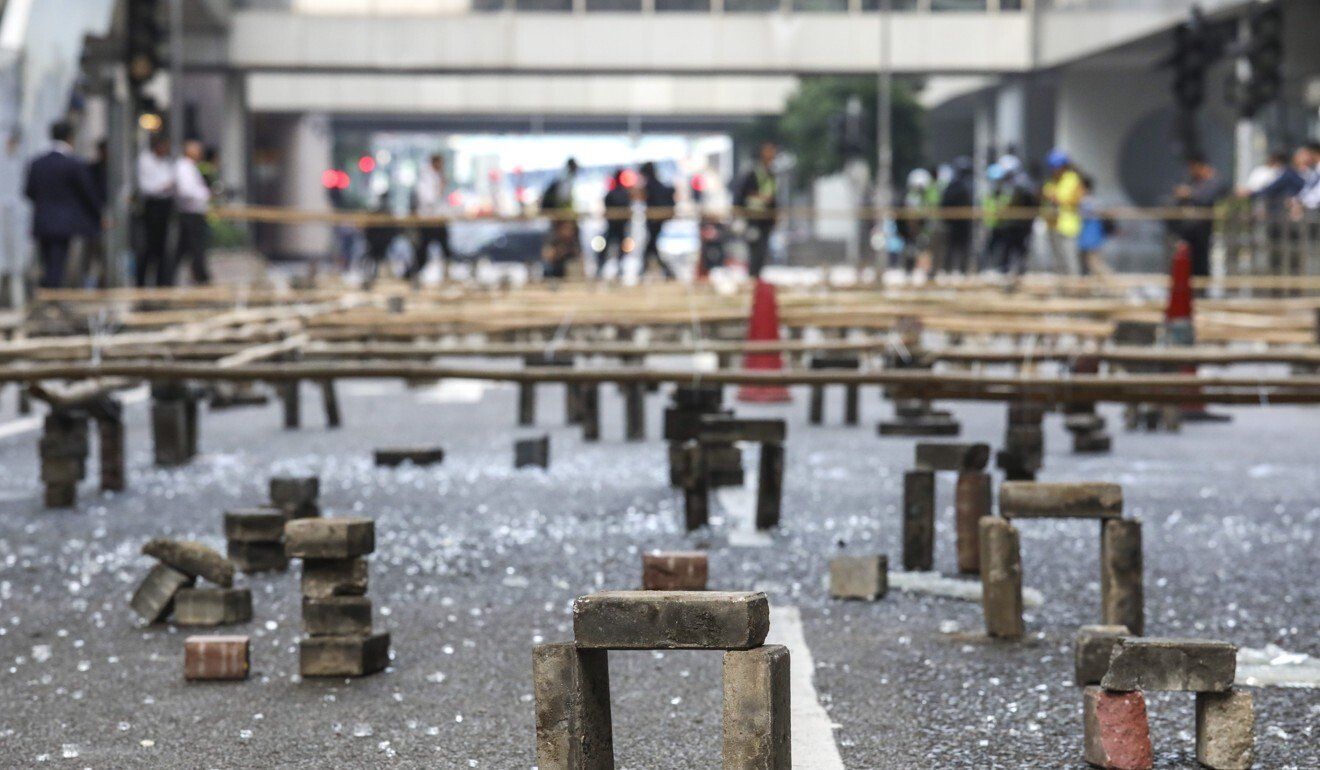Hong Kong News

Pair who assaulted student they thought was plain-clothes police officer jailed
Two young Hong Kong men have been jailed for 26 months each for rioting and attacking a student they mistook for a plain-clothes police officer during the civil unrest in 2019.
Judge Ernest Lin Kam-hung, of the District Court, said on Wednesday that the irrational behaviour shown in this case was both legally and morally indefensible, as it involved violent protesters making unreasonable demands and taking out their frustrations on a vulnerable civilian in a commercial district, tarnishing Hong Kong’s reputation by their large-scale bullying and “silencing operation”.
Even if the victim had been a police officer, the judge said that did not justify the assault, adding that the hatred towards police was difficult to understand, like “a small dog chasing its own tail”.
“The community’s hatred towards the police appeared to be based on their use of force,” Lin said. “But it was the protesters’ conduct on the streets that gave police the opportunity to use force.”
He added that officers were not above the law and would face harsher punishment when they used excessive force, or even broke the law while on duty.
 Anti-government protesters set up roadblocks in Central on November 13, 2019.
Anti-government protesters set up roadblocks in Central on November 13, 2019.
His comments came as he jailed student Joshua Wong Ka-chun, 23, and bartender Lee Lok-hang, 21, after the pair pleaded guilty earlier this month to charges of rioting and wounding over the events at Kimberley Plaza in Causeway Bay in the early hours of November 13.
The judge also lamented how the initial peaceful and rational protests two years ago were hijacked by radicals, who believed they could achieve justice by breaking the law, to the point that it became unclear what they were fighting for.
“In the end, their methods were no different from the tyrants’, who they opposed,” Lin said. “They were exercising another form of tyranny … and they were no more noble than their opponents.”
In particular, Lin noted that umbrellas, once regarded as a symbol against oppression, had been turned into weapons and shields to cover up wrongdoing, as seen in the present case.
The court must send a clear message that such conduct would not be condoned by the community or the law, the judge said.
At the time of the incident, tensions between police and protesters were running high after months of anti-government protests.
The District Court previously heard that a riot broke out when a man, who was on his way home, was surrounded by some 30 protesters who demanded to search his belongings and then assaulted him with punches, kicks and umbrellas after finding him in possession of a water bottle with a police logo and a lanyard bearing the words “Hong Kong Police”.
The victim, then a 21-year-old student, named only as X to protect his identity, had been watching protesters in the area for hours from about 9pm on the previous day as they dug up bricks, set up roadblocks and set nearby shops and carriageways on fire.
He was initially tailed by a man and a woman who took pictures of him as he turned to leave at about 11.30pm. Then he was approached by a bigger group of about 10 masked protesters who believed he was a police officer and demanded to search his backpack, which he refused.
They later snatched the bag and searched it, revealing books, papers, a pencil case and the two items bearing the police logo.
Lee, who had recognised X as his schoolmate, initially defended the man, but later joined in the attack as more protesters gathered.
Footage played in court showed X protecting his head as he was attacked while lying on the ground against a locked gate. By the time he managed to get back up minutes later, his white shirt was smeared with blood.
A subsequent medical examination showed that X sustained hematoma on three areas of his scalp and bruising on his ear.
He also lost his iPhone and university card.
Rioting is punishable by 10 years in prison, but that term is capped at seven years when the case is heard in District Court.











